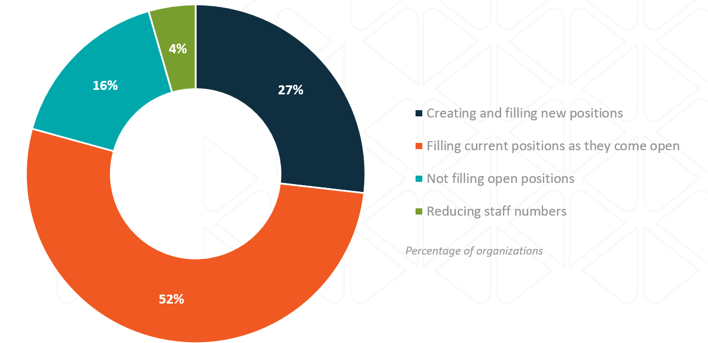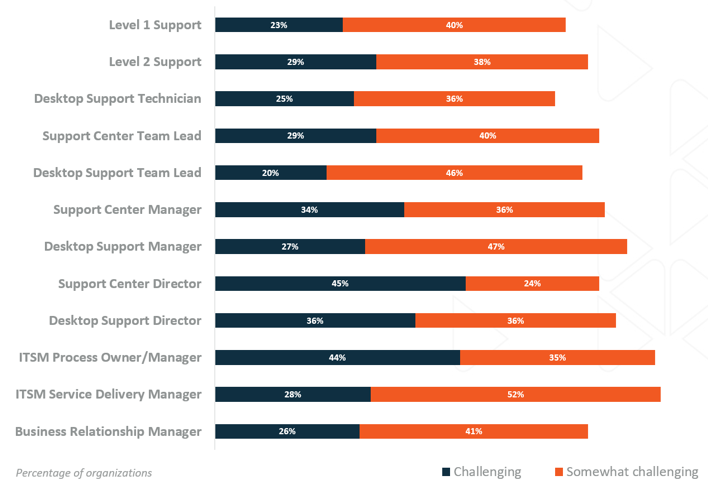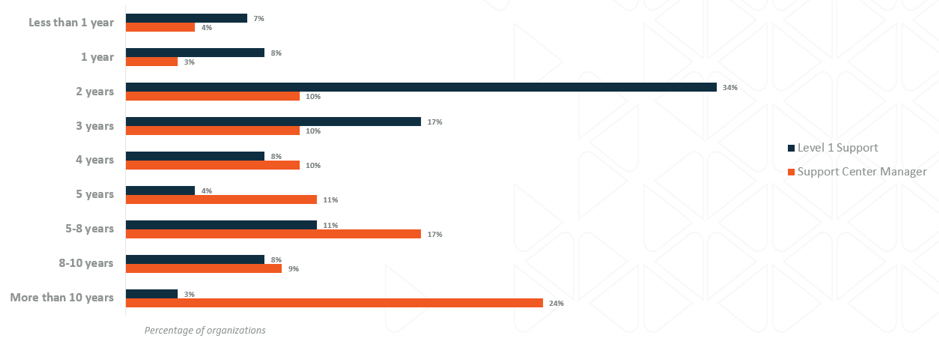
Is Self-Service, Automation, and AI Impacting IT Service Desk Staffing?
The corporate IT help desk, or IT service desk, has long been under pressure to “deliver more with less.” With the actions taken ranging from the outsourcing of IT support capabilities to third-parties (that offer to deliver economies of scale and the use of staff in lower-cost economies), to the growing use of technology to save both time and money (and to hopefully deliver a better customer/employee experience).
But what impact is all this change having on IT service desk staffing? Is the IT service management (ITSM) industry seeing a drop in demand for service desk analysts? And do IT professionals in service desk roles need to worry about their medium-term future?
To help answer these questions, and others, this blog uses the data in the latest HDI survey reports to dig deeper into the current state of IT service desk staffing.
This blog by @Joe_the_IT_Guy uses the data in the latest @thinkHDI survey reports to dig deeper into the current state of IT #servicedesk staffing. Click To TweetIs the ITSM industry seeing a reduction in service desk jobs?
Thankfully, the latest HDI The State of Staffing, Training, and Compensation in 2019 report data actually shows the reverse to be true – 27% of organizations are creating and filling new IT support positions versus just 4% that are cutting/reducing the current headcount. And in terms of the organizations with a static headcount: 52% of all organizations are hiring for current positions (as they come up) versus only 16% that aren’t filling their open positions.
This is great news for IT support professionals. Plus, the “negative” staffing situations – the 4% and 16% – could, of course, be due to wider root causes. For instance, the organizational financial “well-being,” with recruitment limitations in place across the organization as a whole not just the IT service desk.
Hiring expectations for the next 12 months:
The HDI data thus shows that there’s still a high degree of demand for service desk personnel despite the removal of manual tasks associated with the successful adoption of labor/time-saving capabilities such as:
- Knowledge management
- Self-service/help
- Automation and artificial intelligence (AI)
The need for more service desk staff is probably also helped by the growing volumes of service desk tickets, with the HDI The State of Ticket Management and Metrics in 2019 report identifying that 68% of support organizations saw an increase in ticket volume over the past year (versus the 10% that saw a decrease).
So, for now, the service desk analyst role looks safe – and is perhaps even flourishing somewhat – despite the continued introduction of technological assistance. And what else do the HDI stats show for those already in, or looking to enter, IT service desk roles?
According to @thinkHDI 27% of organizations are creating and filling new #ITsupport positions versus just 4% that are cutting/reducing the current headcount. Click To TweetThere’s no shortage of potential IT service desk recruits
ITSM tool capabilities should make it easier for people to become a service desk analyst these days. For example, due to the commonplace use of scripts, FAQs, and deeper knowledge articles. Plus, the automated capabilities that help work to quickly flow through the incident lifecycle.
It’s probably why the service desk analyst role isn’t one that IT support organizations are having the most difficulty finding skilled candidates for. Instead, the hardest-to-fill roles (according to the HDI staffing survey, the blue bars below) are all at a director and manager level:
Hiring challenges: filling positions
But this doesn’t mean that there isn’t significant service desk analyst turnover to fill (which is both good and bad for service desk analysts).
Service desk analyst churn
There continues to be a relatively high level of service desk analyst churn – and one that can’t easily be positioned against the increasing introduction of technology to reduce the need for people (as these first statistics show that there isn’t lower demand).
The following HDI comparison of Level 1 support turnover against that for Level 2 support and desktop support yields some interesting questions about the current level of service desk analyst churn.
Average turnover, by position:
| In the last 12 months… | Level 1 analysts | Level 2 analysts | Desktop support technicians |
| Left the company
| 16% | 5% | 10% |
| Left the support organization but stayed in the company | 6% | 4% | 4% |
| Changed positions within the support organization | 6% | 6% | 4% |
Source: HDI, The State of Staffing, Training, and Compensation in 2019
The above data can be viewed from a variety of perspectives. For instance, the:
- “Changed position within the support organization” 6% could just be the natural progression of service desk staff – from service desk analyst to senior service desk analyst or service desk leader, or a technical-knowledge-based move to Level 2 support. Given the level, and relative number of potential avenues for career growth, the Level 1 support role is probably always going to see more of this “in-house” movement.
- “Left the support organization but stayed with the company” 6% is probably due to the fact that modern service desk analysts don’t need to be as highly skilled in technology as they used to. Thus, making it easier for them to move into other business roles, for instance external customer support or product management – where what they’ve learned while working on the service desk can be put to great use.
- “Left the company” 16% is probably the most significant, due to it being both higher than the sum of all Level 1 support movement (versus Level 2 being at just 50%) and the sum of Level 2 and Desktop Support Technician leavers. Trying to understand the reasons for this high level of movement is difficult though, because there will be many causes of the “moving on.” From dissatisfaction with the organization, the relative level of remuneration (with better-paid service desk analyst opportunities elsewhere), low unemployment levels, to the role itself (with different opportunities elsewhere). Although the first is likely to be standard across all IT roles.
It’s probably best to look to another set of HDI datapoints when questioning the relative level of service desk analyst churn.
Service desk analyst is often a transitional role
HDI analysis of the average tenure of IT support roles shows a stark contrast between service desk analysts and service desk managers. As the following chart shows, the average tenure for Level 1 analysts peaks at 2 years compared to manager where this is in excess of 10 years. This isn’t saying that people don’t stay in the service desk analyst role for long, because slightly more than 50% of Level 1 support personnel have been in the role for 3 or more years. It’s just that 49% of people stay in the role for two years or less versus only 17% of managers.
@thinkHDI analysis of the average tenure of IT support roles shows a stark contrast between #servicedesk analysts and service desk managers, says @Joe_the_IT_Guy. Click To TweetTenure: analyst vs. manager
This, when added to the average turnover data, intimates that the role itself is likely to be the cause of the churn. Whether this is because of the opportunities that the role brings to people – with it potentially a steppingstone to other roles within or outside of the IT organization. Or because the role offers a certain level of “natural selection” – whereby some people just aren’t cut out for, or simply don’t want to deal with, the pressures of IT service desk life. If you’ve ever worked on an IT service desk, then you’ll know exactly what I mean by this.
To conclude, the ITSM industry has yet to see a negative impact on IT service desk staffing from the introduction of self-service and automation (and now AI). This is the good news – for IT support professionals, for now at least – but the level of Level 1 support staff churn is not something to be ignored by IT organizations. The rise in IT support’s focus on, and the importance of, customer (or employee) experience will necessitate a different set of qualities for service desk analysts; which will, in turn, make it more important to retain the staff that demonstrate these qualities.
Do these stats resonate with your IT service desk staffing situation? If so, how do you plan to deal with this churn and the impending change, perhaps by holding on to your service desk analysts for longer? Please let me know in the comments.










